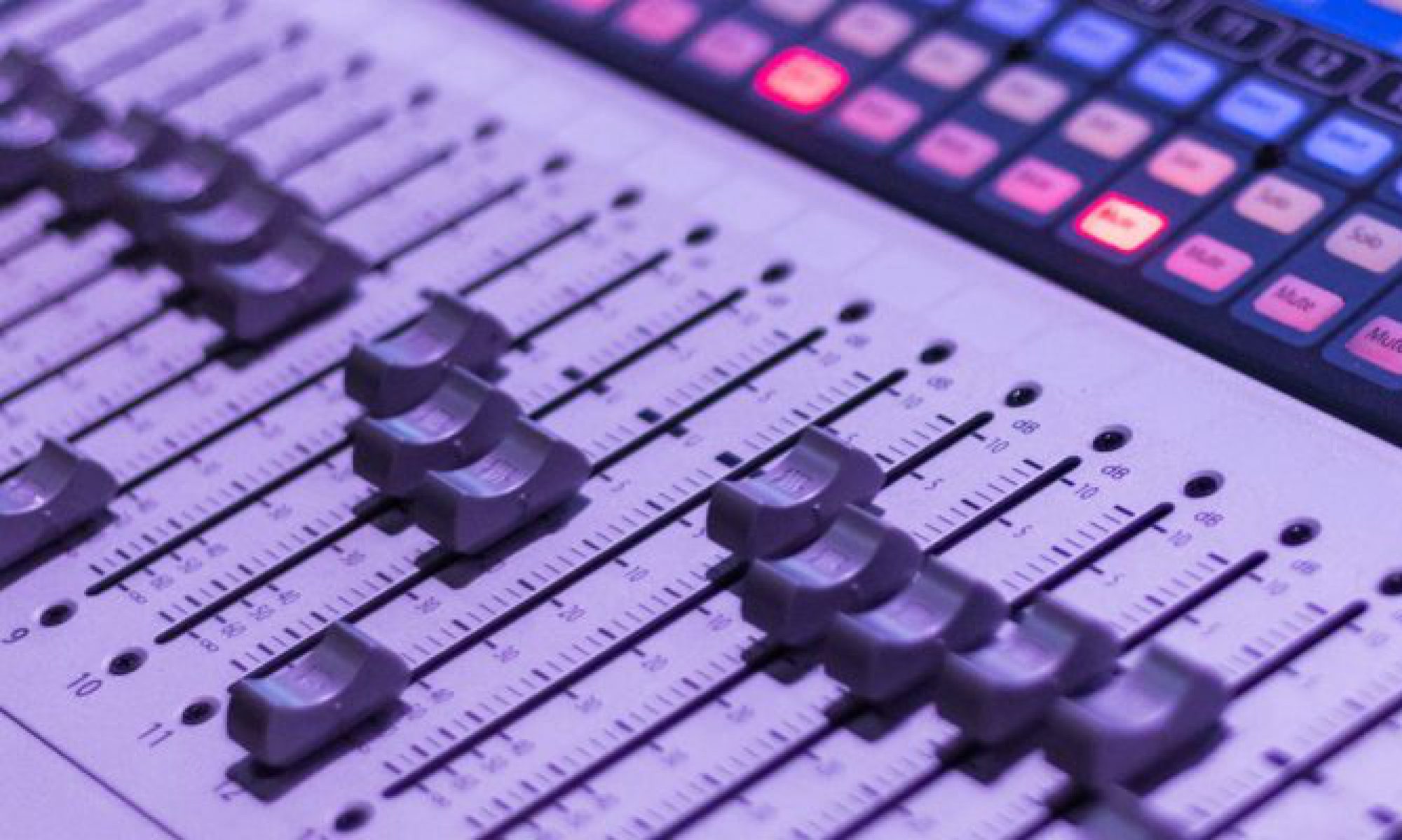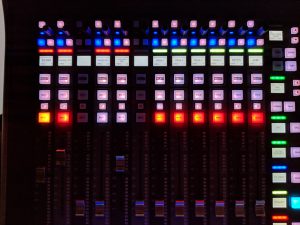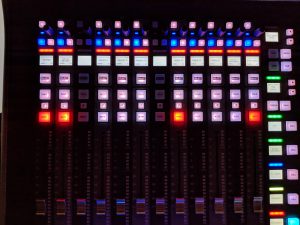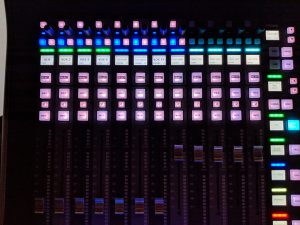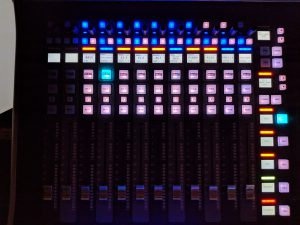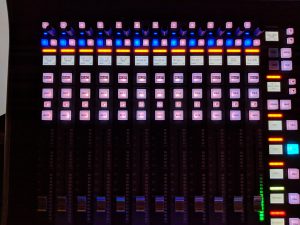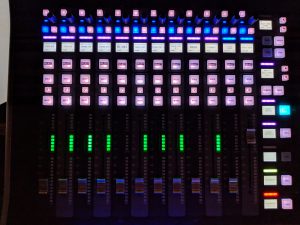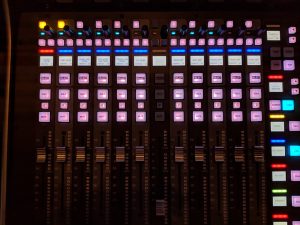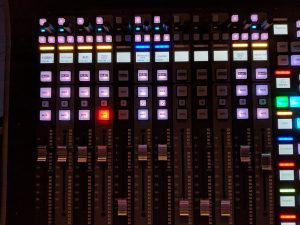This last week of our expanded From the Booth series is about how I use effects in regards to verb, delay, chorus, etc. If you missed out on the post with the recording I’m discussing, check out this link. This is from our last Night of Worship here at CCC. This week I’ll be discussing how I use effects to enhance and highlight inputs in our mixes at CCC. We have 10 stereo effects channels. Yes stereo, and I’ll tell you why. The first reason is this, we send stereo inputs to them. While we don’t do much panning in house, on our web-stream they will hear the width that we may not hear as well in the room. Secondly, because of the sheer power of our console, it doesn’t hurt us to run this many stereo effects. Even with all that going on we are only at ~10% DSP processing on the board and have plenty of audio pathways left. Some consoles are a bit more limited and so running stereo effects channels might not be the best choice. I say all of this because I don’t want you to see what I do and say, “I have to do that because he does it.” As with all of my posts, my goal is to explain the meat of what I do and give you the opportunity to translate what I do into your world if you want to try it. I would say the meat of what I’m doing here is just that I’m running them on my board rather than through an outboard device. We do that for a lot of reasons, but most of all so that if we have a failure in our outboard waves rig (has only happened once and it was the first week we had installed it) my mix will only be shy on the compression side of things because that’s about all we do with waves (running plugins like the C6, HComp, F6, CLA-76, NLS, etc). Here are the 10 effect channels that we run.
- Drum Verb
- Snare Verb
- Instrument Verb
- Instrument FX (basically a chorus setup for instruments)
- Bass Guitar Drive
- Guitar Drive
- Vocal Echo (basically a slap delay meant to help the lead stand-out a bit)
- Vocal Delay
- Vocal FX (chorus)
- Vocal Verb
Now we have some busses setup in case there is anything we want to add for a big event as well (the setup on the L500s is a little labor intensive so having a few stems setup and ready to go is necessary). For instance, sometimes we like to use an overdrive pedal on the vocals and occasionally we have a weird verb that works better for a certain song that we load in from waves or the board. But, for 45 out of 52 weekends, we use these almost exclusively. I thought about posting pictures of my plugins for these but like I said before, these settings are what I’m setup to use for my room, the settings for your room and with your console will vary. The last disclaimer before we get into things is that our room is pretty dead. Because of that we have to run verbs pretty thick to help the mixes come alive and provide some sustain to the music. We aren’t running heavy verbs but we do need to help fill the room a bit more than most rooms. Treat the following explanations as to where you could start improving your effects if you feel they are lacking in a certain area.
The first group effects I wanted to talk about is the drum verbs. We have two effects that we use with drums and as I said before they are the general drum verb and a snare verb. The regular drum verb is nothing too special but here are the basics of how we have it setup. We run our verbs 100% wet and just send less to them, preferably on faders. This plate verb leans heavily on the early reflections to provide depth of sound with a decay of about 2.5 seconds and it could be gated if we want it too. The decay time is something that you’ll have to setup for each room but between 2 and 3 seconds is often a good place to start. We have a diffusion knob in our plugin as well that we use to help lower presence so we can have more verb without it being able to hear it as much as our actual inputs. Couple all that with some dampening on the low end of things and a little at the top to control the upper end of the spectrum that’s about all we do. Secondly we run a bigger verb that is solely fed by the snare drum (sometimes the toms) so the snare itself can have a more sustained sound. This verb is almost identical to the drum verb with a few small exceptions. The first is that we are doubling the simulated room size and adding another half second or so the decay time so the sound just goes on for days! Combine that with a less dampened high end and we absolutely love our snare verb. We used to just run the snare a bit hotter in the drum verb send but found that we liked the results better when we setup an extra verb tailored for the snare drum. To be clear, the snare is in both verbs.
The next group of effects is what we do with our instruments. The general instrument verb is pretty close to the drum verb. We do that so that when you hear the band they all sound like they are getting treated the same. When you do that it keeps your band sounding congruent in the verbs. As you’ll find out the vocals are also about the same as well. Next is the bass drive channel. We just recently added this. This isn’t so much a verb but a double patched bass guitar channel. However, we do not feed this to the subs. We picked up this channel to help us hear the bass guitar primary tones better and help to better balance the to halves of the guitar (this works similar to double micing a kick drum). On this channel we roll up the EQ a bit, insert a bass modeler with the presence and drive settings cranked up to taste and bass turned almost all the way off. We also compress this output quite a bit so stays a pretty consistent level. We also needed to delay the output a little to compensate for waves adding like 23 frames of latency that don’t exist within the board. Having this channel has really helped us to be able to mix quickly the blend of the sub response with the primary notes of the bass guitar and has really enhanced how we use the bass guitar. Secondarily to that is the guitar drive. We use this on the lead guitars for each song to help enhance any instrumental solos that happen. Most of the time instead of mixing the input up during that time we are pushing this bus up to the top of the mix. This one was quite simple as it’s just a mix bus (so we can change which guitar is feeding it as necessary) with a saturation plugin with the drive turned up to taste. Combining that with a compressor that hits pretty hard we get a nice crunchy sound to help make that solo really pop and shine right when we need it to. While pushing the input up does work well, we have found that this gives us a slightly different texture that we really like that perks up your ears when you hear it. Lastly in this group is the instrument FX which is basically a stereo modulated chorus. I primarily use this on acoustics and piano which adds some width and depth that help either of the two inputs be highlighted and easier to hear without being super present. Just try it on an acoustic one time and you’ll be hooked, if you don’t hear it, turn it up a bit more.
The last group is the vocals. Some people ask me why we run so many effects channels on the vocals. They wonder why it all is necessary. We do all this for a couple of different reasons. The best reason is because our mixes are vocal-centric. If that really is the case, shouldn’t they have the most color added to them? The most presence? The most weighting in our mixes? Because that’s true, we pull out all the stops for our vocals. Even to the case of slight side-chain compressing the vocal range out of our other group busses to create room for them to sit nicely in the mix (I’ll be going over this when I discuss the cool things we do in our waves rig). To that end, as I said before we run 4 effects busses for vocals. Primarily, all vocals are ran through our vocal verb which gives them plenty of body and depth and is setup just like the two other general verbs but with less dampening so that it helps the vocals pop even more. We also use the vocal echo on the lead vocal for each song. This is a very fast slap delay with anywhere between 10-20 ms of delay so it’s not a straight double. Basically it needs to be fast enough to double the voice and be distinguishable but not separate from it. Having this effect running really helps our lead vocal be at the top or near the top without needing to be pushed hard to get there. Next is the vocal delay that we tap in. This is exactly what you think it is. We all run one like it. What we do differently is set the EQ to automate for every scene so we change the way it sounds using basically filters (hpf and lpf) to give it a very present sound or low-fi sound. Occasionally I find myself putting that saturator I use on the guitar drive to give it some good crunch as well. Lastly is the Vocal FX which is a stereo de-tuned chorus that runs into a chorus. So the left side of the stereo bus is tuned up like 8 cents, the right side down 8 cents, than it goes to a modulated chorus plugin. This sounds like overkill but adds a good bit of width to the mix. We usually just use this on BGVs because putting it on a lead gets pretty rough on vocals at the top of the mix.
So that is the basics of how we handle effects here at CCC. As I said earlier this is just how we do it. Over the years these have been refined, re-designed, re-tooled, etc as things in our room changes but it seems the team has always landed on this layout. I had always done versions of this stuff but have really loved the consistency of the effects we use. One of the biggest things you can do to bring weekly consistency to your mixes beyond templates for digital consoles is deciding on an effect set that everyone agrees to use. If you have any questions about any of these effects or how we use them don’t hesitate to comment below or email me at daniel@studiostagelive.com.
